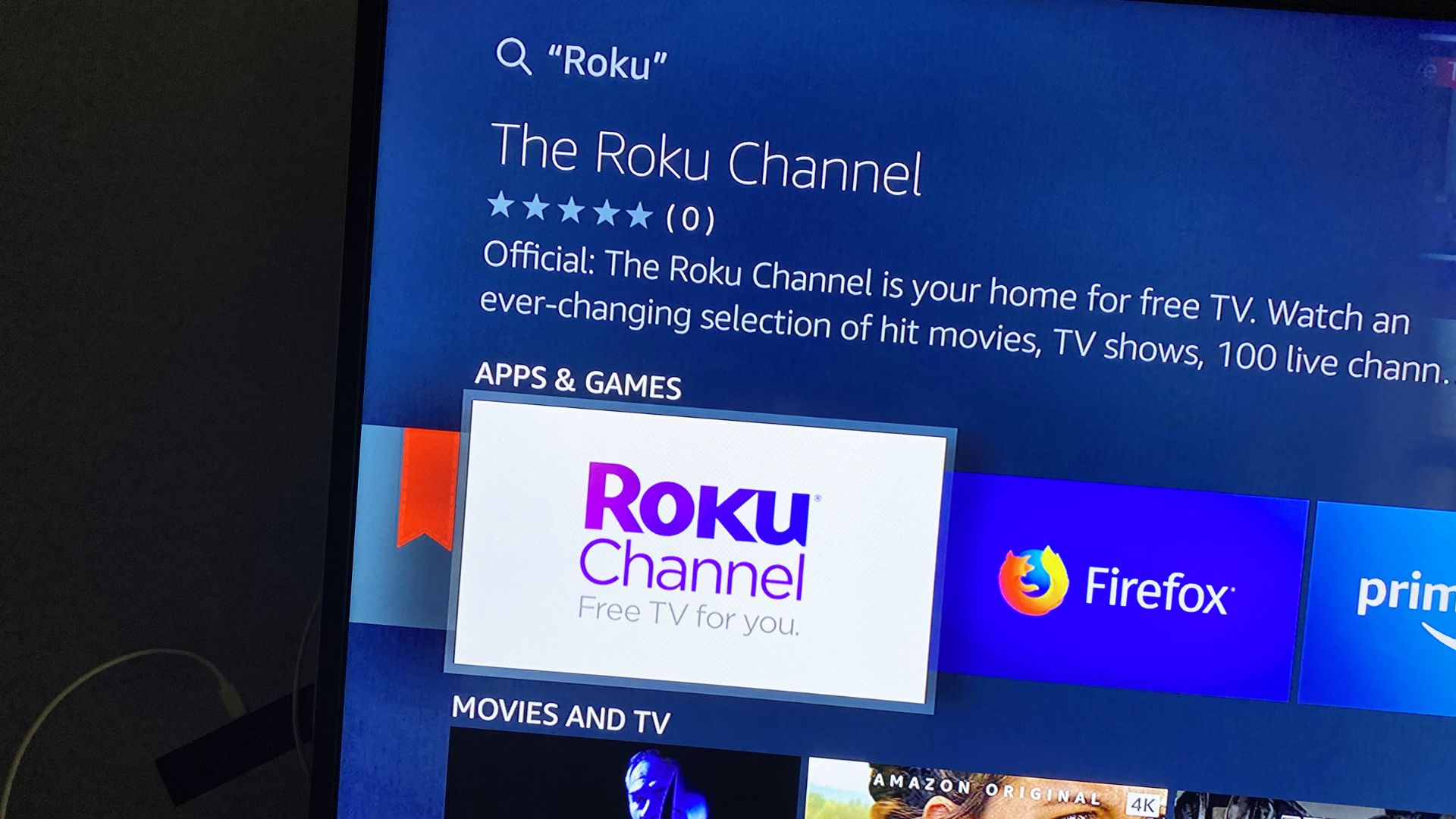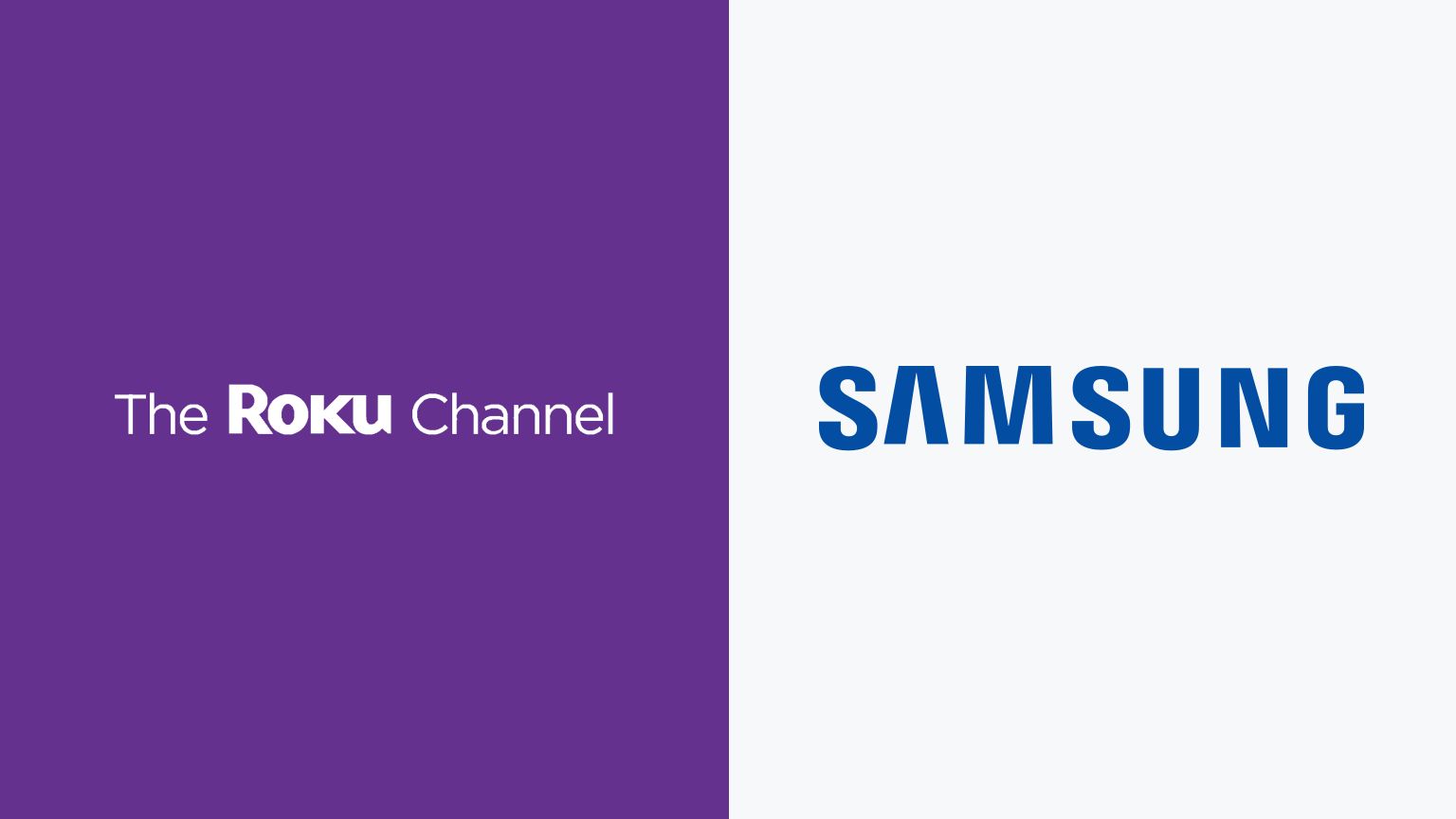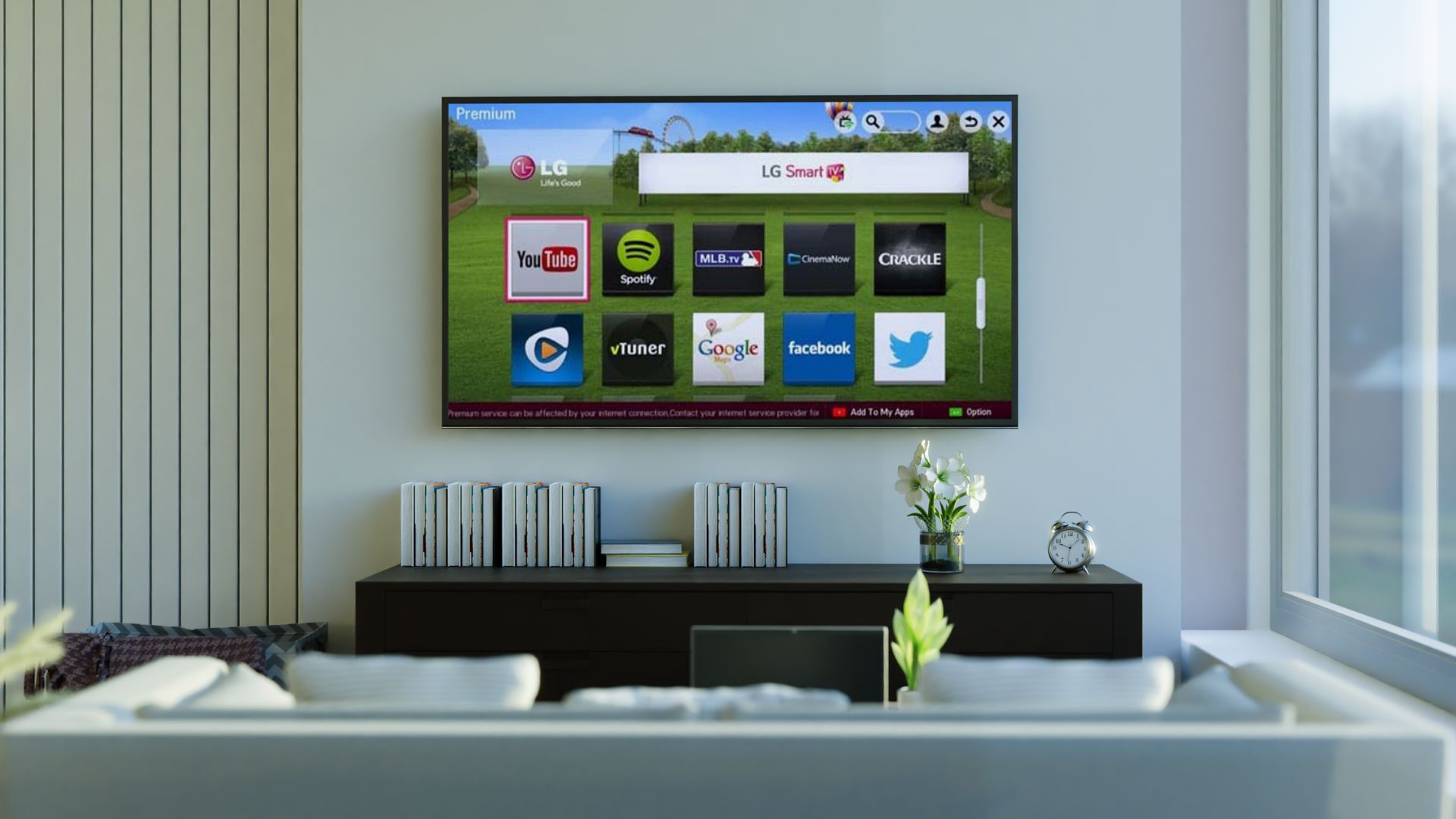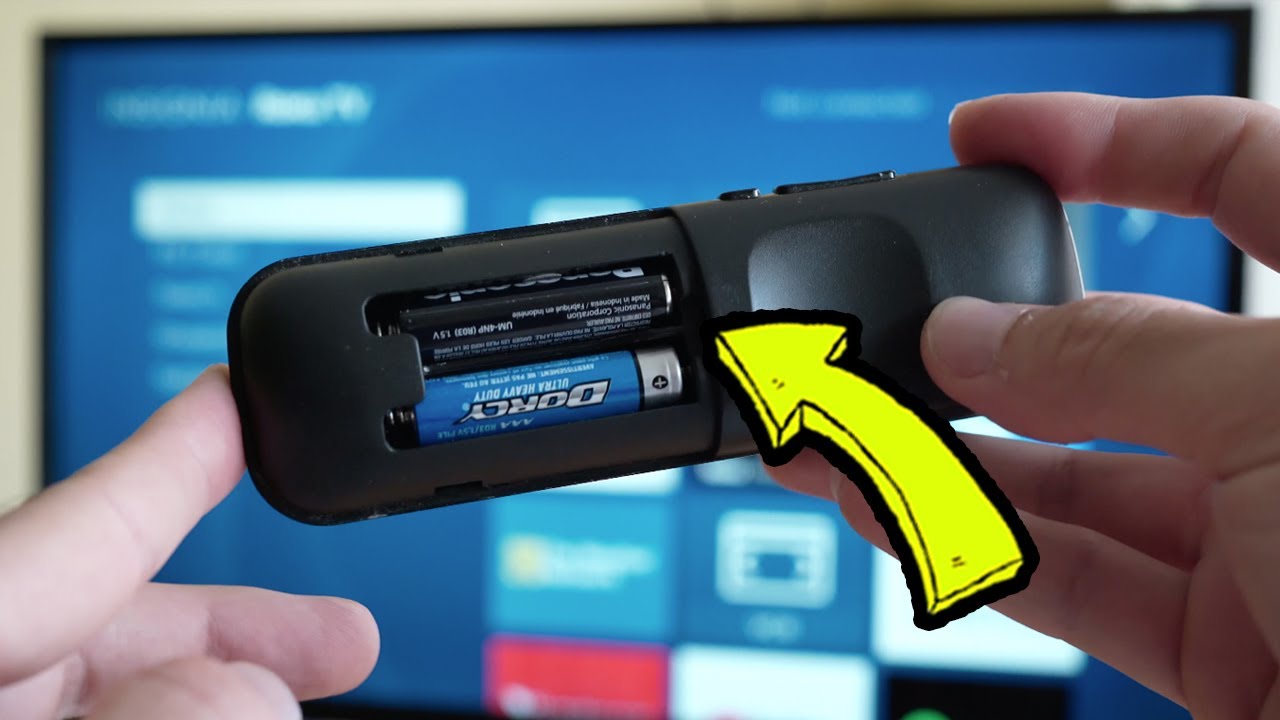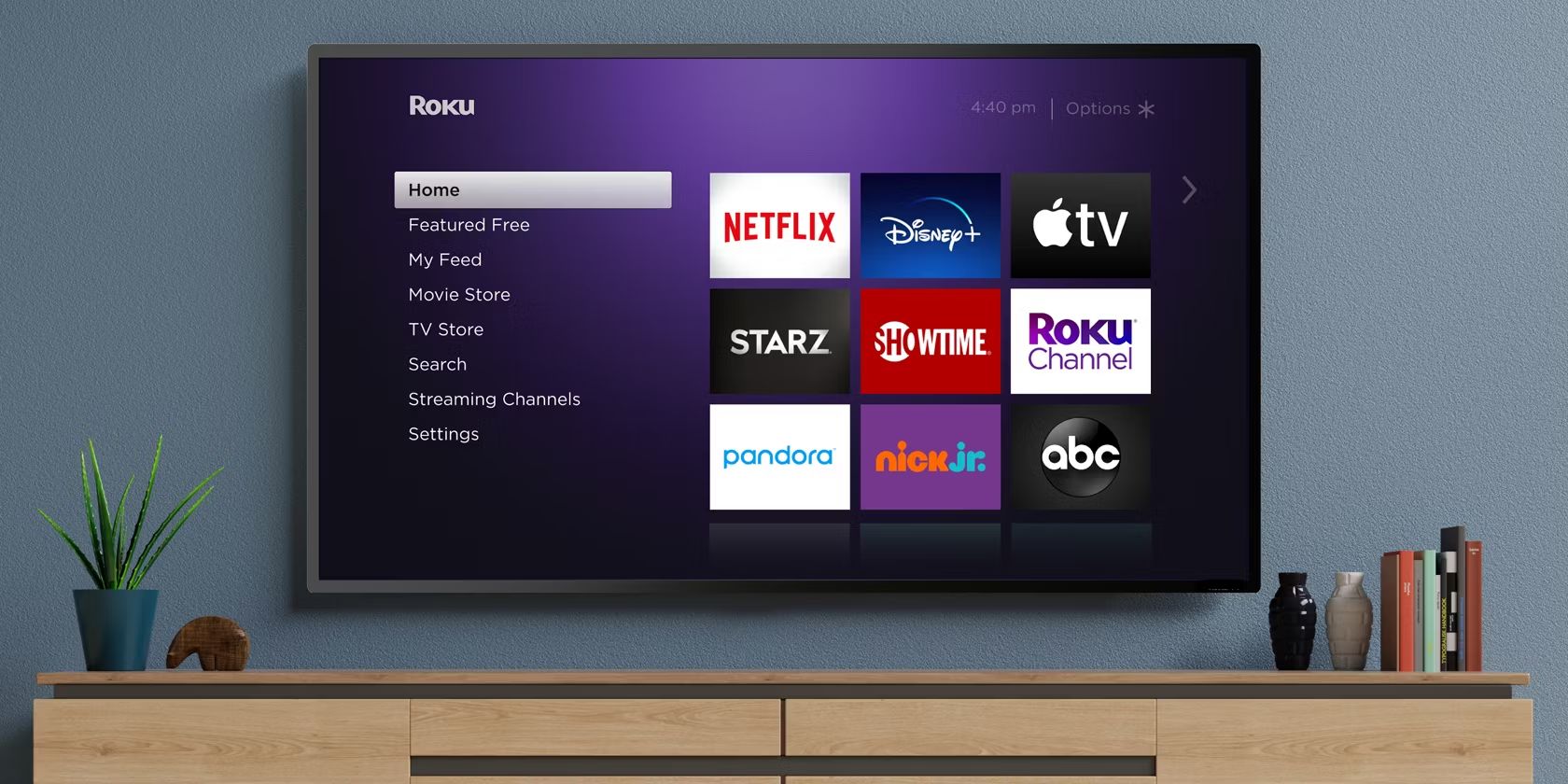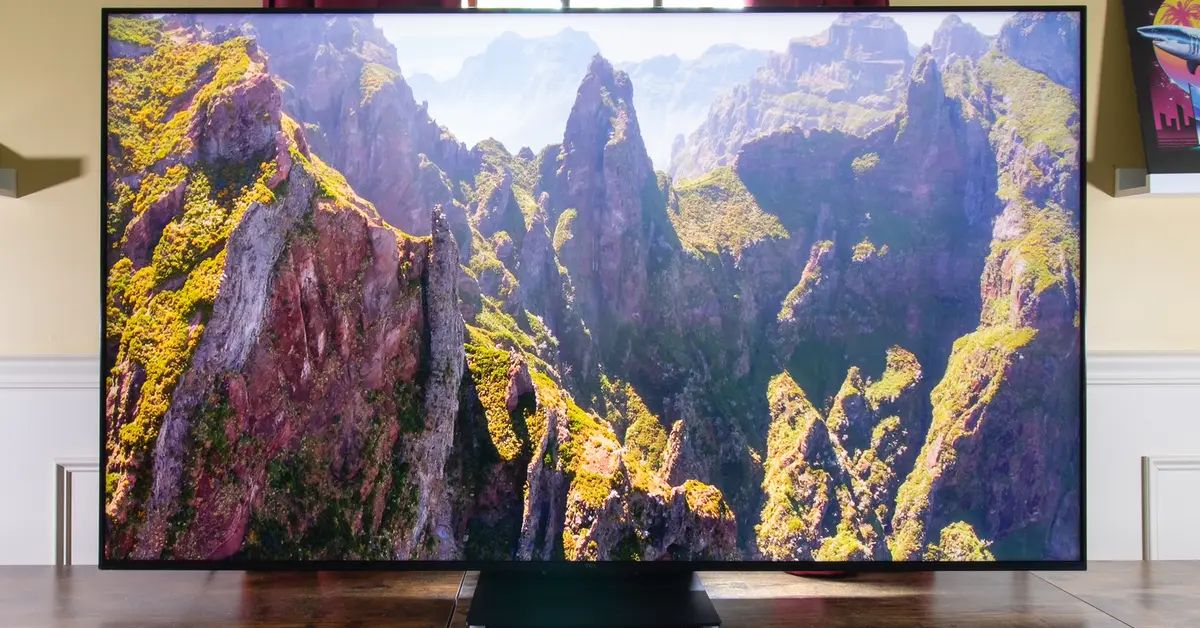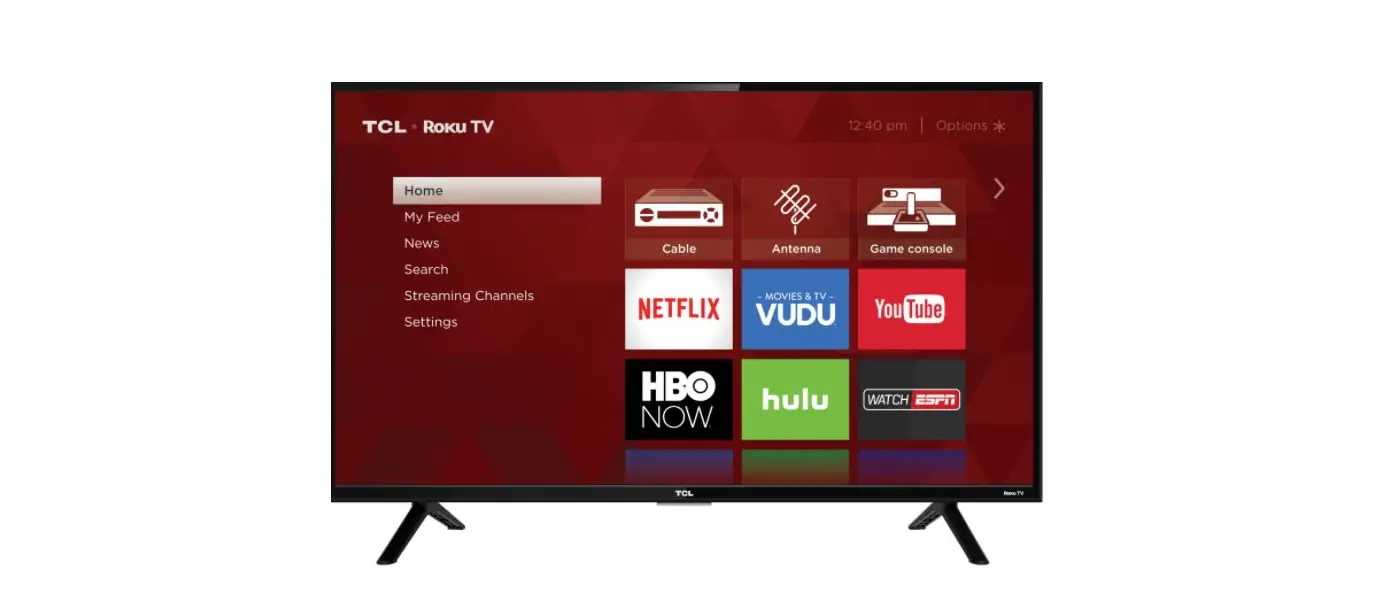Introduction
With the continuous advancement of technology, televisions have evolved from simple displays to feature-rich devices that offer a multitude of entertainment options. Two terms that are often mentioned in the realm of modern TVs are “Smart TV” and “Smart Roku TV.” While they share some similarities, there are distinct differences between them that can influence your buying decision.
A Smart TV, as the name implies, is a television that is equipped with internet connectivity and an operating system, allowing users to access a wide range of online content and services. On the other hand, a Smart Roku TV is a specific type of Smart TV that utilizes the Roku platform as its operating system.
Both Smart TVs and Smart Roku TVs offer a host of features that elevate the traditional TV viewing experience. They allow users to stream movies and TV shows, access popular streaming services, browse the internet, and even play games. However, there are several factors that set them apart, including their user interface, content selection, control options, and price.
In this article, we will delve into the differences between Smart TVs and Smart Roku TVs to help you make an informed decision when considering a purchase. By understanding their unique features and capabilities, you can choose the TV that best suits your needs and preferences.
Definition of a Smart TV
A Smart TV is a television that is equipped with internet connectivity and a built-in operating system, allowing users to access a variety of online content and services. Unlike traditional TVs, Smart TVs have the ability to connect to the internet via Wi-Fi or Ethernet, transforming them into interactive multimedia devices.
The key feature of a Smart TV is its ability to stream content from various online platforms, such as streaming services like Netflix, Hulu, and Amazon Prime Video. With a Smart TV, you can access a vast library of movies, TV shows, and documentaries without the need for additional devices like streaming boxes or dongles.
In addition to streaming, Smart TVs offer a range of other features that enhance the viewing experience. Many Smart TVs come with built-in web browsers, allowing you to browse the internet, check emails, and even use social media platforms right from your TV screen.
Furthermore, Smart TVs often include apps and widgets that provide access to a wide variety of content and services. These can include news apps, weather updates, music streaming apps, and even video games. Some Smart TVs also support voice control, allowing you to search for content or perform basic functions using voice commands.
Another important aspect of Smart TVs is their ability to connect to other smart devices in your home. With the rise of the Internet of Things (IoT), many Smart TVs now offer compatibility with smart home devices such as smart speakers, thermostats, and security systems. This allows you to control your smart home ecosystem directly from your TV, providing a centralized hub for managing all your connected devices.
In summary, a Smart TV is a television that goes beyond the traditional viewing experience by offering internet connectivity, access to online content and services, built-in apps and widgets, and the ability to integrate with other smart devices. These features provide users with a more immersive and personalized entertainment experience.
Definition of a Smart Roku TV
A Smart Roku TV is a specific type of Smart TV that utilizes the Roku operating system, developed by Roku Inc., as its interface and platform. Roku, known for its popular line of streaming media players, has expanded its reach into the television market by partnering with various TV manufacturers to integrate the Roku platform directly into their TVs.
What sets a Smart Roku TV apart from other Smart TVs is the simplicity and user-friendly nature of the Roku interface. The Roku OS provides a streamlined and intuitive user experience, making it easy to navigate through various streaming channels and services. The interface is designed to prioritize content discovery, making it straightforward for users to find and access their favorite movies, TV shows, and other streaming content.
One of the key advantages of a Smart Roku TV is its vast selection of streaming channels. Roku has partnerships with numerous content providers, offering thousands of channels catering to a wide range of interests and preferences. Whether you’re a fan of movies, sports, news, or international content, Roku offers a diverse range of options to choose from.
In addition to the extensive channel selection, Smart Roku TVs also provide a unified search feature that allows users to search for movies, shows, actors, and more across multiple streaming platforms. This eliminates the need to individually search on different apps or services, saving time and creating a more seamless viewing experience.
Furthermore, Roku devices are known for their superb performance and stability. The Roku OS is optimized to run efficiently on the hardware of Roku TVs, ensuring smooth streaming and quick app launches. Additionally, Roku regularly updates its software, introducing new features and improvements to enhance the user experience and address any potential security vulnerabilities.
Another noteworthy aspect of Smart Roku TVs is their compatibility with Roku’s ecosystem of additional devices. If you own a Roku streaming media player or a Roku soundbar, you can seamlessly integrate them with your Smart Roku TV to create a comprehensive home entertainment system. This integration allows for easy content casting, voice control, and synchronization of settings across devices.
In summary, a Smart Roku TV is a Smart TV that utilizes the Roku operating system, offering a simple and user-friendly interface, a wide selection of streaming channels, unified search functionality, and seamless integration with other Roku devices. These features make the Smart Roku TV an excellent choice for those seeking a hassle-free and content-rich streaming experience.
Features of a Smart TV
Smart TVs come with a range of features that enhance the traditional TV viewing experience and provide users with greater flexibility and convenience. Let’s explore some of the key features of a Smart TV:
- Internet Connectivity: One of the defining features of a Smart TV is its ability to connect to the internet. This allows users to stream online content, access web-based services, and browse the internet directly from their TV.
- Streaming Capabilities: Smart TVs provide access to a variety of streaming platforms and services, such as Netflix, Hulu, Amazon Prime Video, and more. This enables users to watch their favorite movies, TV shows, and documentaries on-demand, without the need for additional devices.
- App Support: Smart TVs often come pre-loaded with popular apps like YouTube, Spotify, and social media platforms. Additionally, users can download and install additional apps from an app store, expanding the functionality of the TV to suit their specific entertainment needs.
- Screen Mirroring: Many Smart TVs support screen mirroring, allowing users to wirelessly display the content from their smartphones, tablets, or laptops on the TV screen. This feature is useful for sharing photos, videos, and presentations with others in a larger format.
- Web Browsing: With an integrated web browser, Smart TVs enable users to browse the internet, check emails, and access websites directly from the TV screen. This feature provides a more convenient and immersive web experience without the need for a separate device.
- Voice Control: Some Smart TVs offer voice control functionality, allowing users to search for content, change channels, adjust volume, and perform other basic functions using voice commands. This feature adds a level of convenience and hands-free operation to the TV.
- Multiple Connectivity Options: Smart TVs typically come equipped with multiple input ports, such as HDMI, USB, and audio jacks, allowing users to connect external devices like gaming consoles, Blu-ray players, soundbars, and more.
- Smart Home Integration: Many Smart TVs can be integrated with other smart home devices, such as smart speakers, home automation systems, and voice assistants. This allows users to control their smart home ecosystem directly from the TV, creating a centralized hub for managing all their connected devices.
These features collectively enhance the entertainment experience by providing users with a wide array of content options, easy access to web-based services, and the convenience of controlling their TV and smart home devices from a single interface.
Features of a Smart Roku TV
Smart Roku TVs offer a unique set of features that distinguish them from other Smart TVs on the market. Let’s explore some of the key features that make Smart Roku TVs a popular choice:
- Roku OS: Smart Roku TVs operate on the Roku operating system, known for its user-friendly interface and intuitive navigation. The Roku OS provides a seamless and straightforward user experience, making it easy to access and discover content.
- Extensive Channel Selection: One of the standout features of Smart Roku TVs is the vast selection of streaming channels available. Roku has partnerships with numerous content providers, offering thousands of channels catering to a wide range of interests and preferences.
- Unified Search: Smart Roku TVs provide a unified search feature that allows users to search for movies, shows, actors, and more across multiple streaming platforms. This eliminates the need to individually search on different apps or services, saving time and creating a more seamless viewing experience.
- Stability and Performance: Roku devices are known for their excellent performance and stability. The Roku OS is optimized to run efficiently on the hardware of Smart Roku TVs, ensuring smooth streaming, quick app launches, and minimal buffering interruptions.
- Roku Mobile App: Users can enhance their Smart Roku TV experience by downloading the Roku mobile app. This app allows users to control their TV, search for content, and use their mobile device as a remote control. It also enables private listening, where audio is streamed directly to the user’s headphones connected to their mobile device.
- Cross-Device Integration: If you own a Roku streaming media player or a Roku soundbar, you can seamlessly integrate them with your Smart Roku TV. This integration allows for easy content casting, voice control, and synchronization of settings across devices, providing a unified and streamlined entertainment system.
- Regular Software Updates: Roku regularly updates its software, introducing new features and improvements to enhance the user experience and address any potential security vulnerabilities. Users can enjoy the benefits of these updates, ensuring their Smart Roku TV remains up-to-date and optimized.
- User-Friendly Interface: The Roku interface is designed with simplicity in mind, enabling users to navigate through channels, apps, and settings effortlessly. The intuitive layout and user-friendly interface make it accessible to users of all ages and technical abilities.
These features collectively make Smart Roku TVs a popular choice for those seeking a hassle-free streaming experience with a wide selection of content, easy navigation, and stable performance. The integration with other Roku devices and regular software updates further enhance the user experience, making Smart Roku TVs a powerful entertainment hub for any home.
User Interface Comparison
The user interface (UI) plays a crucial role in the overall user experience of a Smart TV. It determines how easily users can navigate through menus, access content, and interact with the TV. Let’s explore the user interface comparison between Smart TVs and Smart Roku TVs:
Smart TV User Interface: The user interface of Smart TVs can vary depending on the manufacturer and the operating system used. Common features include a home screen with app icons or tiles, a main menu for navigation, and a settings menu for customization. The UI design can range from simple and minimalistic to more visually appealing with customizable layouts and themes.
Smart TVs often provide a grid-based layout, allowing users to choose their preferred apps and organize them according to their preferences. Some Smart TVs also offer personalized recommendations based on the user’s viewing habits and preferences.
Smart Roku TV User Interface: The user interface of Smart Roku TVs is known for its simplicity and ease of use. The Roku interface features a home screen that showcases a horizontal row of icons representing different streaming channels. Users can easily scroll through the channels horizontally to find the desired content.
One of the standout features of the Roku interface is the Roku Channel Store, which offers a vast selection of streaming channels. The interface allows users to add and remove channels, rearrange their channel lineup, and customize their viewing experience to their liking. The Roku interface also highlights trending and popular content, making it easy for users to discover new shows and movies.
In terms of overall user experience, the Smart Roku TV interface is often praised for its simplicity, intuitive navigation, and content-focused design. Users can quickly access their favorite channels and launch them with just a few clicks, making it a user-friendly option for people of all ages.
When comparing the user interfaces of Smart TVs and Smart Roku TVs, it ultimately comes down to personal preference. Some users may prefer the customizability and visual appeal of certain Smart TV interfaces, while others may appreciate the simplicity and content-centric approach of the Smart Roku TV interface.
Regardless of the chosen Smart TV platform, it is essential to consider factors such as ease of navigation, personalization options, and the availability of the apps and services you frequently use. This ensures a smooth and enjoyable user experience for all your streaming and entertainment needs.
Content Selection and Availability
When it comes to Smart TVs and Smart Roku TVs, the availability and variety of content play a crucial role in delivering an enjoyable and diverse entertainment experience. Let’s delve into the comparison of content selection and availability:
Smart TV Content Selection: Smart TVs offer a wide range of content through built-in apps and access to various streaming services. Many Smart TVs come pre-loaded with popular streaming apps like Netflix, Hulu, Amazon Prime Video, and YouTube. Additionally, users can download and install additional apps from an app store, expanding the content options available on their Smart TV.
The content available on Smart TVs can vary depending on the region, licensing agreements, and partnerships between the TV manufacturer and content providers. It is important to note that while most popular streaming services are readily available on Smart TVs, some niche or regional-specific streaming platforms may not be available on certain models or brands.
Smart Roku TV Content Selection: Smart Roku TVs boast an extensive library of streaming channels, offering a vast selection of content from a variety of genres and interests. Roku has partnerships with numerous content providers, including popular streaming services like Netflix, Disney+, HBO Max, and many more.
Roku’s Channel Store provides access to thousands of channels, ranging from mainstream services to niche content providers, ensuring a diverse selection of movies, TV shows, documentaries, news, sports, and international programs. Roku also offers free ad-supported channels, giving users access to a broad range of content without any subscription fees.
What sets Roku apart is its user-friendly search feature that allows users to search for specific titles, actors, or directors across multiple streaming platforms. This simplifies the content discovery process and ensures that users can find their desired content easily, regardless of which streaming service it is available on.
Overall, Smart Roku TVs offer an extensive and diverse content selection, catering to a wide range of preferences and interests. With the vast number of streaming channels available, users can discover new and exciting content while still enjoying their favorite shows and movies from popular streaming services.
When considering content selection and availability, it is vital to check whether the specific streaming services and channels you prefer are supported on the Smart TV or Smart Roku TV you are considering. Additionally, factors such as regional availability and licensing agreements should be taken into account to ensure that you have access to the content you desire.
Control Options
The control options available for a Smart TV or Smart Roku TV can have a significant impact on the user experience and convenience. Let’s compare the control options offered by these devices:
Smart TV Control Options: Smart TVs generally offer multiple control options to accommodate different user preferences. The primary control method is the traditional remote control, which allows users to navigate through menus, select content, adjust volume, and perform various functions. Some Smart TVs also feature smart remotes with built-in voice control capabilities, enabling users to search for content or control the TV using voice commands.
In recent years, Smart TVs have embraced voice assistants like Amazon Alexa and Google Assistant. By integrating a compatible voice assistant, users can control their Smart TV using voice commands, such as changing channels, adjusting volume, or searching for specific content. This hands-free control option provides an additional level of convenience and ease of use.
Another control option available for some Smart TVs is mobile device control. Manufacturers often provide dedicated mobile apps that allow users to control their Smart TVs using their smartphones or tablets. These apps typically offer additional features, such as text input, virtual keyboard, and touchpad navigation, enhancing the overall control experience.
Smart Roku TV Control Options: Smart Roku TVs also offer multiple control options to cater to different user preferences. The primary control method is the included remote control, which features a simplified design with intuitive navigation buttons. The Roku remote includes shortcut buttons that allow users to directly access popular streaming platforms like Netflix or Hulu.
Similar to Smart TVs, some Smart Roku TVs also support voice control through the remote control. Users can search for content, launch apps, and navigate through menus by using voice commands, making it convenient for those who prefer a hands-free control experience.
Additionally, Roku provides a mobile app called Roku Mobile App that allows users to control their Smart Roku TV using their mobile devices. The app offers functionalities like remote control, voice control, and private listening using headphones connected to the mobile device.
Furthermore, Smart Roku TVs are compatible with voice assistants like Amazon Alexa and Google Assistant, enabling users to control the TV through voice commands using a separate compatible device or a smart speaker.
In summary, both Smart TVs and Smart Roku TVs offer various control options, including traditional remotes, voice control, mobile device control, and integration with voice assistants. The specific control options available may vary depending on the model and manufacturer. By considering your preferred control method and the available options, you can choose a TV that provides a comfortable and convenient control experience tailored to your needs.
Price Comparison
Price is an important factor to consider when comparing Smart TVs and Smart Roku TVs. Let’s take a closer look at the price comparison between these two options:
Smart TV Pricing: Smart TVs come in a wide range of prices, depending on various factors such as brand, screen size, display technology, and additional features. Generally, Smart TVs are available in multiple price tiers to accommodate different budget ranges.
Entry-level Smart TVs with smaller screen sizes and basic features can be quite affordable, making them a suitable choice for those on a limited budget. As you move up the price range, Smart TVs offer larger screen sizes, higher display resolutions, and more advanced features, such as HDR (High Dynamic Range) support and advanced audio technologies. These premium models are typically more expensive.
The pricing of Smart TVs can also vary based on the brand reputation. Well-known brands tend to have higher price tags due to their brand value, build quality, and customer support. However, it is worth noting that there are also reputable, budget-friendly Smart TV options available from lesser-known brands.
Smart Roku TV Pricing: Smart Roku TVs offer excellent value for their price range. Roku has partnered with various TV manufacturers to bring Smart Roku TVs to the market, resulting in a wide range of options at different price points.
Smart Roku TVs are known for their competitive pricing, offering advanced features and a user-friendly interface at affordable costs. Entry-level Smart Roku TVs are generally priced competitively with basic Smart TVs, making them an attractive option for budget-conscious consumers.
Similar to Smart TVs, the price of Smart Roku TVs can increase as you move up to larger screen sizes or choose models with premium features like 4K resolution, HDR support, or superior audio technologies. However, overall, Smart Roku TVs tend to offer a compelling balance of features and pricing compared to other Smart TV options in the market.
When considering the price comparison between Smart TVs and Smart Roku TVs, it is important to weigh the features, brand reputation, and personal preferences against the budget allocation. Assessing your needs and priorities will help you determine the best value-for-money option that meets your entertainment requirements without breaking the bank.
Conclusion
Both Smart TVs and Smart Roku TVs offer an array of features and capabilities that enhance the traditional TV viewing experience. However, there are distinct differences between them that may influence your decision when choosing the right option for you.
Smart TVs, with their diverse range of models and operating systems, provide flexibility and customization options. They offer various control options, a wide selection of apps, and the ability to integrate with other smart devices. The availability of streaming services and apps may vary based on regional agreements and manufacturer partnerships.
On the other hand, Smart Roku TVs stand out with their simplicity and user-friendly interface. The Roku platform offers a vast selection of streaming channels and a unified search feature that spans across multiple services. Furthermore, Smart Roku TVs provide affordable pricing options without compromising on features and performance.
When making a decision, consider factors such as the user interface, content selection and availability, control options, and pricing. Determine your specific needs and preferences, including your preferred streaming apps, desired features, and budgetary constraints.
If customization, control options, and a wide range of apps are important to you, a Smart TV may be the ideal choice. On the other hand, if you prioritize simplicity, a content-focused interface, and affordability, a Smart Roku TV may be the better option for you.
Ultimately, the choice between a Smart TV and a Smart Roku TV depends on your individual requirements and priorities. By carefully considering the features, user experience, and pricing, you can select the TV that best suits your needs and provides an immersive and enjoyable entertainment experience.









